Shanxi Province
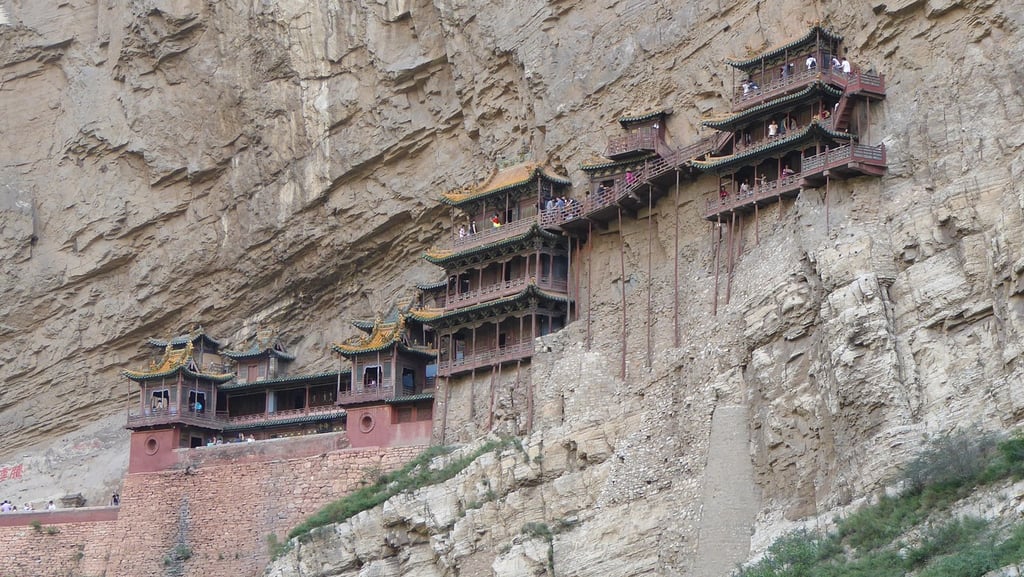

Introduction
Shanxi Province, located in northern China between the Loess Plateau and the Taihang Mountains, is a region rich in history, culture, and natural resources. With over 35 million residents, it combines fertile river valleys, rugged mountains, and extensive coal deposits, creating a landscape where agriculture, commerce, and industry coexist. The province is also known for its ancient architecture and historical sites, reflecting centuries of political and cultural significance.
Cities like Taiyuan, Pingyao, and Datong illustrate Shanxi’s blend of history and modernity. Taiyuan, the provincial capital, is a center for administration, industry, and transport, while Pingyao preserves a remarkably well-kept ancient city wall and merchant streets.
Shanxi’s central location in northern China has long made it a hub for politics, trade, and transport, connecting the Loess Plateau with the North China Plain and neighboring provinces. The province’s coal reserves and traditional industries coexist alongside agriculture, tourism, and cultural preservation.
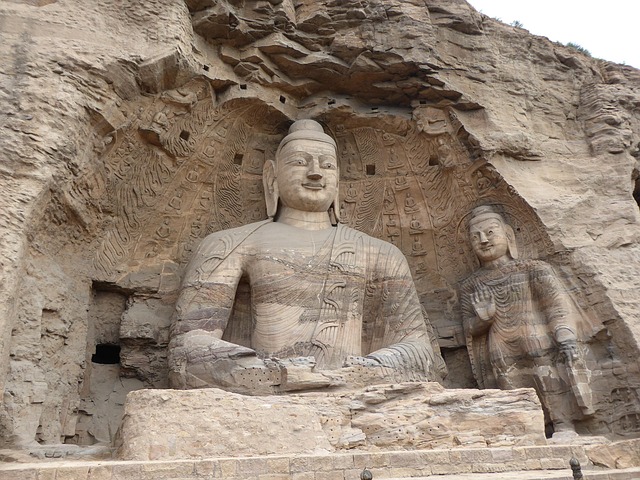

Geography and Key Cities
Shanxi extends across the Loess Plateau, with the Taihang Mountains along its eastern edge and the Yellow River marking the western boundary.
The landscape includes fertile river valleys, rolling hills, and rugged, forested mountains, creating a mix of agricultural land and resource-rich terrain. The climate is continental monsoon, featuring hot summers, cold winters, and relatively low rainfall, typical of northern inland provinces.
The provincial capital, Taiyuan, functions as a key transport, administrative, and industrial center, connecting north–south and east–west railways and supporting modern industry.
Datong, near the northern border, is historically and economically important, with coal mining, the Yungang Grottoes, and ancient city walls. Pingyao remains one of China’s best-preserved Ming-era cities, offering a glimpse into traditional urban life.
Other notable cities include Changzhi, known for historical relics and cultural heritage, and Jincheng, a center for coal and energy production, reflecting Shanxi’s longstanding role in mining and industry.
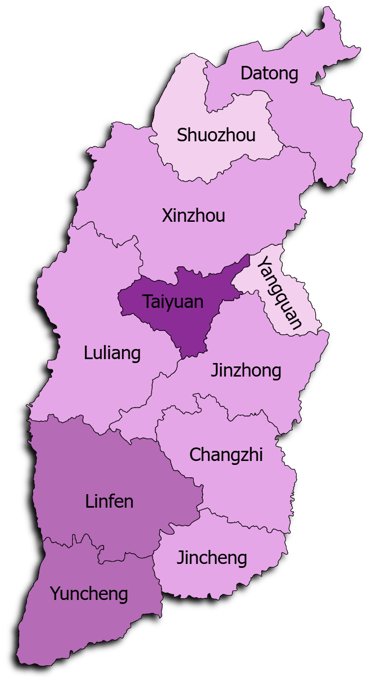



Shanxi has a long and distinguished history. The region was important during the Spring and Autumn period and the Warring States period, later becoming a commercial and cultural center under the Tang and Ming dynasties. Shanxi’s cities were often strategic military outposts and hubs for trade along the Grand Canal.
Throughout its history, Shanxi experienced wars, floods, and periods of prosperity linked to commerce and resource extraction. The province played roles in modern conflicts, including the Second Sino-Japanese War and revolutionary movements. Today, Shanxi blends its historic architecture, ancient commerce, and natural resources with modern industrial growth.
Historical Background
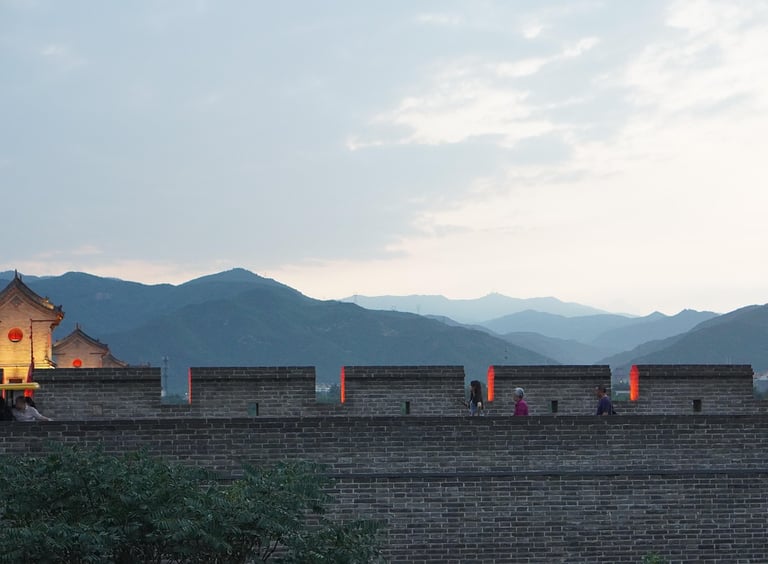



Nature and Landmarks
Shanxi brings together mountains, rivers, and rich historical heritage, creating a province where nature and culture intersect. The Taihang and Luliang Mountains feature steep cliffs, deep gorges, and dense forests, while the Fen River valley supports fertile farmland and traditional villages.
The province is full of historical landmarks. Near Datong, the Yungang Grottoes contain thousands of Buddhist statues carved into cliff faces, while Pingyao preserves a complete Ming-era city wall and traditional streets.
In Taiyuan, the Jinci Temple complex combines classical architecture, gardens, and religious heritage, reflecting centuries of cultural development. Across Shanxi, smaller mountains, temples, and rural villages offer opportunities for hiking, cultural exploration, and traditional scenery.
These landscapes illustrate Shanxi’s dual character, where sacred mountains, rivers, and ancient sites coexist with urban centers deeply rooted in history.

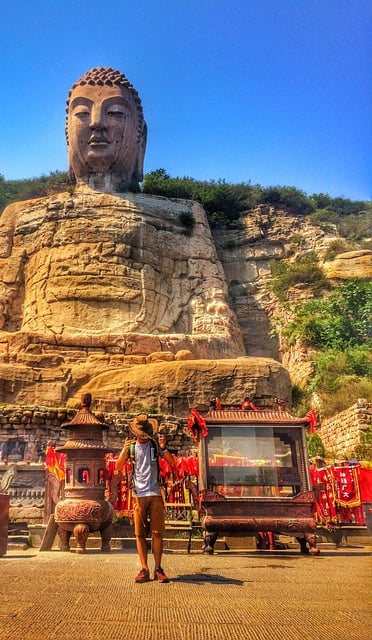
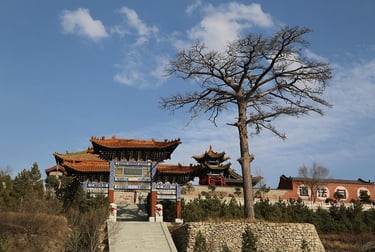

Culture and Cuisine
Shanxi’s culture reflects its position as a northern hub of trade, religion, and traditional arts. Architecture ranges from ancient city walls in Pingyao and Taiyuan to Buddhist grottoes and temples in Datong, blending historical, religious, and commercial influences. Festivals, music, and folk traditions thrive across the province, from temple fairs and shadow plays to local opera and martial arts performances. Shanxi is closely associated with Confucian and Buddhist scholarship, folk crafts, and commerce, creating a cultural tapestry combining mountains, valleys, and historic towns.
Linguistically, Mandarin dominates, with local dialects preserving centuries of regional identity. Traditional arts include paper-cutting, shadow puppetry, wood carving, opera, and martial arts demonstrations, often reflecting agricultural, religious, and commercial themes.
Shanxi’s cuisine emphasizes wheat, noodles, vinegar, and hearty flavors. Signature dishes include:
Daoxiaomian (knife-cut noodles), a staple of northern Shanxi,
Shanxi mature vinegar, a prized seasoning in local dishes,
Braised pork with noodles, slow-cooked for rich flavor,
Steamed buns and dumplings, daily wheat-based staples,
Lamb and mutton dishes, common in colder northern areas,
Local breads and pancakes, often eaten with vinegar or savory fillings,
Steamed freshwater fish, highlighting rivers and lakes.
Compared with southern provinces, Shanxi cuisine favors wheat-based staples, sour and savory flavors, and hearty meals.

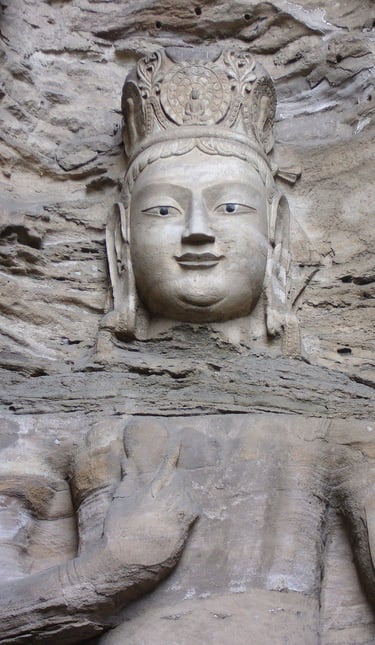
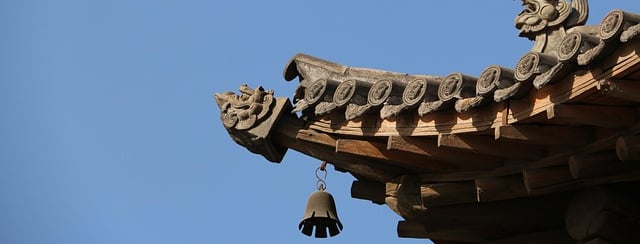

Economy and Modern Development
Shanxi is a major economic center in northern China, historically built on coal mining, energy production, and trade. Cities like Taiyuan, Datong, and Jincheng host mining, metallurgy, and machinery industries, while agriculture thrives in the Fen River valley. Tourism around Pingyao, Yungang Grottoes, and mountains also contributes to the economy.
Historically, Shanxi developed from fertile valleys and merchant networks, later expanding through coal, banking, and trade during the Qing dynasty and early industrialization. Despite modernization, Shanxi maintains cultural traditions while its mineral resources, industrial zones, and historical sites ensure continued economic growth and national connectivity.


Shanxi has produced influential figures across philosophy, politics, literature, and religion. Ancient scholars and merchants, particularly from Pingyao and Taiyuan, played pivotal roles in Confucian scholarship, commerce, and governance. The province also gave rise to Buddhist monks, artists, and folk performers, reflecting spiritual and cultural practices.
In modern times, Shanxi has contributed reformers, scientists, and public figures who continue to embody its historical, commercial, and cultural legacy, combining intellectual achievement with industrial and regional prominence.
People and Notable Figures


Current Trends and Daily Life
Daily life in Shanxi reflects a balance between modern urban life and longstanding rural traditions. In Taiyuan, residents work in industry, services, and administration, shop in markets and shopping districts, and take advantage of the city’s rail and road networks.
Outside the main cities, towns and villages focus on coal mining, agriculture, and traditional crafts, maintaining local economies shaped by the region’s natural resources.
Festivals and cultural events remain important, with temple fairs, shadow plays, and local opera performances keeping traditional arts alive and fostering community ties.
While some residents travel elsewhere for work or education, Shanxi continues to support energy, mining, tourism, and cultural preservation, combining economic activity with heritage. Compared with coastal provinces, Shanxi feels more rooted in tradition, yet it remains economically dynamic and well-connected.






Practical Travel and Tips
Best time to visit: Spring and autumn offer mild weather and scenic landscapes, summer is hot, and winter is cold and dry
Getting there: Taiyuan and Datong are major transport hubs with high-speed rail, highways, and regional airports, making the province accessible from most Chinese cities
Highlights: Yungang Grottoes, Pingyao ancient city, Mount Wutai, Jinci Temple, Fen River valley
Local etiquette: Respect temples, follow festival customs, and be mindful of northern dining traditions
Insider tip: Try knife-cut noodles, taste Shanxi vinegar, explore Pingyao at sunrise, and visit Yungang Grottoes for Buddhist sculpture and mountain scenery.
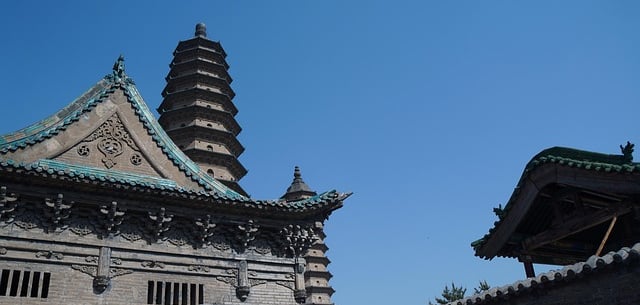













Climate
Plant and animal life
Agriculture
Manufacture
Shanxi has a temperate continental climate, with hot, dry summers and cold, dry winters.
Summer temperatures can exceed 30°C, but rainfall is limited, often concentrated in short, intense storms. Winters are cold, especially in northern and mountainous areas, with occasional snow.
Compared with coastal provinces, Shanxi experiences larger temperature swings and lower humidity, reflecting its inland location on the Loess Plateau.
Spring and autumn are relatively short but mild, providing ideal conditions for agriculture and travel. Seasonal winds can influence dust levels and air quality,
Shanxi’s terrain, dominated by the Loess Plateau, mountains, and river valleys, supports diverse flora and fauna adapted to drier conditions.
Forested hills harbor pine, oak, and birch, while grasslands sustain deer, foxes, wild boars, and various bird species. Rivers such as the Fen provide habitats for fish and amphibians, although aquatic biodiversity is lower than in southern provinces. Protected areas and historical forest reserves help preserve native species.
Compared with wetter regions, Shanxi’s ecosystems are more drought-tolerant and shaped by its semi-arid climate and rugged topography.
Shanxi is known for wheat, corn, millet, and soybeans, with fruit cultivation (apples, pears, and walnuts) in river valleys and hill regions.
Livestock such as sheep and pigs complement crop production, and traditional dryland farming techniques are widely practiced.
Compared with fertile river basins like Hubei or Jiangsu, Shanxi emphasizes grain production suited to semi-arid conditions.
Historically, Shanxi’s strategic location along trade routes fostered the development of granaries and merchant networks, enabling surplus crops to support commerce and regional cities.
Shanxi has long been associated with coal mining, heavy industry, and metallurgy, reflecting its rich mineral resources.
Cities such as Taiyuan and Datong focus on coal, steel, and energy production, while smaller towns host machinery and chemical industries. Tourism linked to ancient temples, Yungang Grottoes, and historic towns contributes to the economy.
Compared with agricultural-focused provinces, Shanxi’s economy is resource-driven and industrially oriented.
Over time, development of railways, mining infrastructure, and state investment has reinforced Shanxi as a key energy and manufacturing hub in northern China.
Navigation
Main Menu
nathan.china-sphere.com
© 2025. All rights reserved.